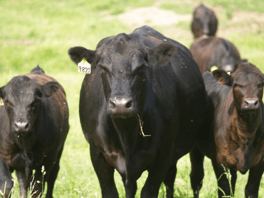With snow covering much of the landscape for over a week now, we will now get arctic cold temperatures and windchills with daily high temperatures that will be the coldest in roughly ten years. It is interesting to note that the Centers for Disease Control (CDC) documents that there are more deaths in the United States due to cold weather exposure (hypothermia) than hot weather exposure (hyperthermia) each year. The CDC has also tracked an average of 1,300 deaths per year in the US due to excessive cold or hypothermia.
Many jobs are affected little with the change in temperature outside, but others do not have that luxury. Occupations such as agriculture (and others) work outside a great deal no matter what the conditions. Helpful reminders are often beneficial to keep safe while accomplishing these tasks.
Everyone responds to cold weather and temperature extremes in general very differently. It is what we are “used to” and what we can “tolerate”. What Alaskans think of as cold in January may be quite different than what we perceive as cold in the lower 48. Specific contributing factors may also affect a person’s susceptibility to cold temperatures such as getting wet, exhaustion, high blood pressure, hypothyroidism, diabetes, and general poor physical condition.
General good practices for working in cold weather include:
- Planning routine maintenance on outdoor equipment for warmer seasons.
- Let others know where you will be working and when you will return.
- Dressing in layers so clothing may be added or taken off in specific instances.
- Keeping dry. Keep extra dry clothes, gloves, and shoes/boots nearby.
- Protecting ears, face, hands, feet, and head. Extremities away from the body core have less blood flow and are more difficult to keep warm.
- Taking breaks in warm locations.
- Staying hydrated. Not often thought of as an issue in cold weather, but just as important.
In some cases, cold-related illness and injuries will occur. It is important to know the symptoms so you can watch yourself and others for signs.
Hypothermia:
- Body loses heat faster than it can be produced.
- Symptoms are shivering, fatigue, confusion, disorientation.
- Can be mild to severe depending on symptoms.
Frostbite:
- Actual freezing of tissue.
- Symptoms are numbness, stinging, or pain and top layer of skin feeling hard and rubbery.
- Wear appropriate clothing and seek medical attention if symptoms remain after 30 minutes.
Trench foot:
- Feet lose heat due to cold or wetness too long and tissue becomes damaged.
- Symptoms include swelling and pain in the feet. Differs from frostbite in that the skin does not actually freeze.
- Keep feet warm and dry.
Cold weather injuries are preventable. Take the time to make the necessary plans for yourself and your workers to stay warm and dry and safely get the job done.
Wayne Dellinger, ANR Educator Union County, can be reached at 937-644-8117 ex. 3024 or dellinger.6@osu.edu. This column is provided by the OSU Extension Agricultural Safety and Health Team. https://agsafety.osu.edu/.











